Is Olana 19th Century America’s Greatest Work of Visual Art?
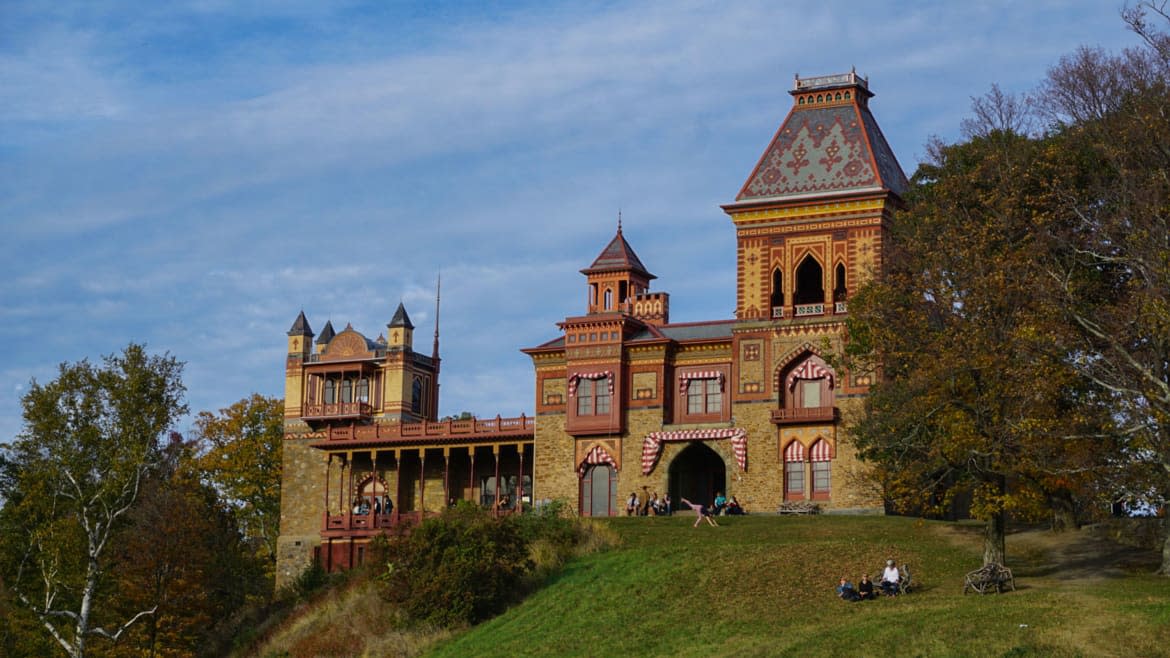
If you want proof that Olana, 19th-century superstar artist Frederic Church’s estate in the Hudson River Valley, is not your usual mansion and grounds, look no farther than the front door. Over the entryway, it says. “Welcome”... in Arabic.
Of course, calling Olana a Hudson River mansion is like calling Notre Dame a church. It just does not get the job done.
In the first place, Olana comprises much more than a mansion. When Church, a genuine celebrity in his time, designed it in the mid-19th century, he envisioned what today would be called a planned environment: he put as much time into designing the landscape as he did into planning the house that crowns the 250 acres surrounding it. He even designed the rustic lawn furniture and carefully selected the crushed red-ochre stone that lines the paths and drives.
Second, I have taken my share of house-and-grounds tours, and never, not once, have I come away saying what I said when I left Olana: I’d live there in a heartbeat.
Mansions, in my experience, tend to be impersonal, chilly places. Olana is nothing like that. It’s impressive, yes, but it’s also warm and inviting and eccentric as hell, and it practically screams, “This is a home.” From the artist’s paintbox to the shawl casually lying on a bench beneath a window, the bits and scraps of life lived reach out and touch your heart. This was a place designed not so much for guests as for its occupants, and you feel their presence even now.
What you need to know first about Olana is the same thing you need to know about Central Park: a lot of what you see isn’t quite real. Yes, trees are trees, hills are hills, but they have been positioned, graded, pruned, arranged. Central Park resembles a natural landscape no more than a formal flower arrangement resembles a meadow. Likewise with Olana. It was no accident that the co-creator of Central Park, Calvert Vaux, assisted Church when he created his country estate.
Church and Vaux, though, were not le Nôtre, the famous French creator of the gardens of Versailles. Where he imposed geometric perfection on wild nature, his American counterparts followed nature’s lead wherever they could. Yes, Church drained a swamp and built a lake and planted trees here and straightened views there, and yes, there is an abundance of “take your picture here” moments, and yes, you’re looking at what a 19th-century Romantic thought was sublime even if it’s a little corny to us, but that’s OK, too, because Church played fair most of the time and followed Nature’s lead. Unlike Central Park, for example, Olana contains no exotic, invasive species.
That said, the artist’s elbow is never far from a visitor’s ribs. (At least it’s an artist’s elbow.) As you walk along the five miles of bridle trails and paths and stop at overlooks, you can almost hear Church whispering, ‘Would you look at that view.’ It’s the same in the house, where every window is precisely sited to frame a specific landscape. Even when Church wasn’t painting, he was painting.
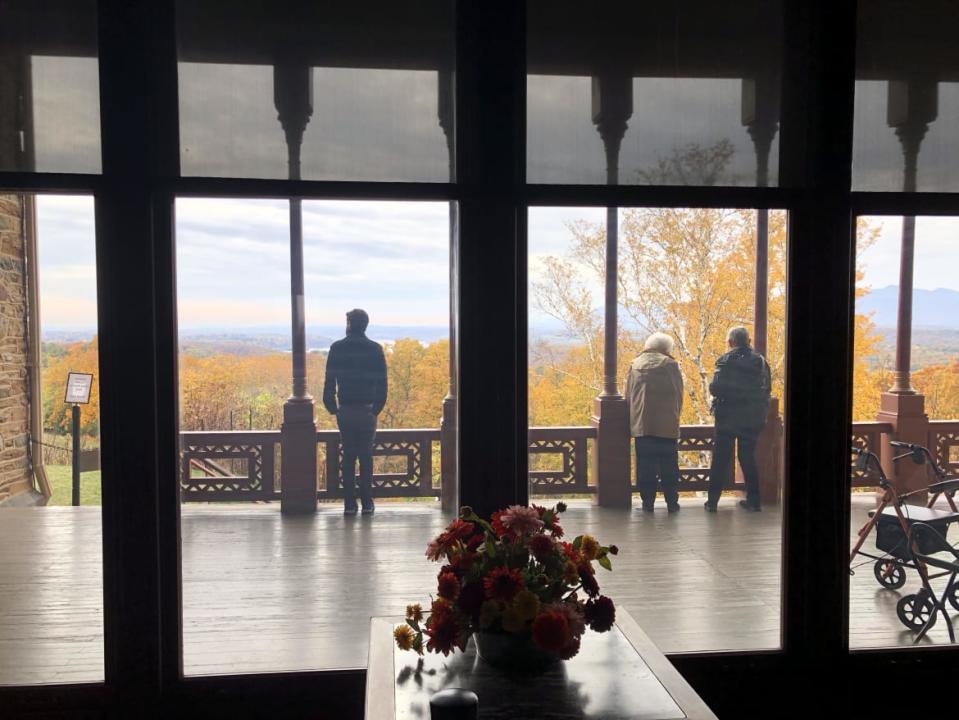
Olana has been called Church’s last masterpiece, and when the work he did on house and grounds is considered as one cohesive work, the label sticks. It was an obsessive undertaking, and he never stopped tinkering with the property.
There was a practical reason for this as well: In 1876, he was diagnosed with rheumatoid arthritis, which would plague him until his death in 1900 and made painting increasingly difficult. He never entirely abandoned painting (he taught himself to paint with his left hand!), but in the last half of his life, Olana became the artwork that most vividly engaged his imagination.
Church fell for the landscape that would become his home for 40 years while still in his twenties, studying with the Hudson River School artist Thomas Cole, who had a house directly across the Hudson River.
Almost instantly successful as a young painter, Church moved to New York City and then began what would be his lifelong habit of traveling the world. But just before his marriage in 1860, he bought a farm on part of the property that would become Olana. Almost immediately, he began overhauling the landscape—planting an orchard and gardens, draining a swamp, reforesting bare hills, and adding a cottage, purportedly designed by Richard Morris Hunt (America’s nascent cultural scene had a small footprint: they could barely manage even two degrees of separation).
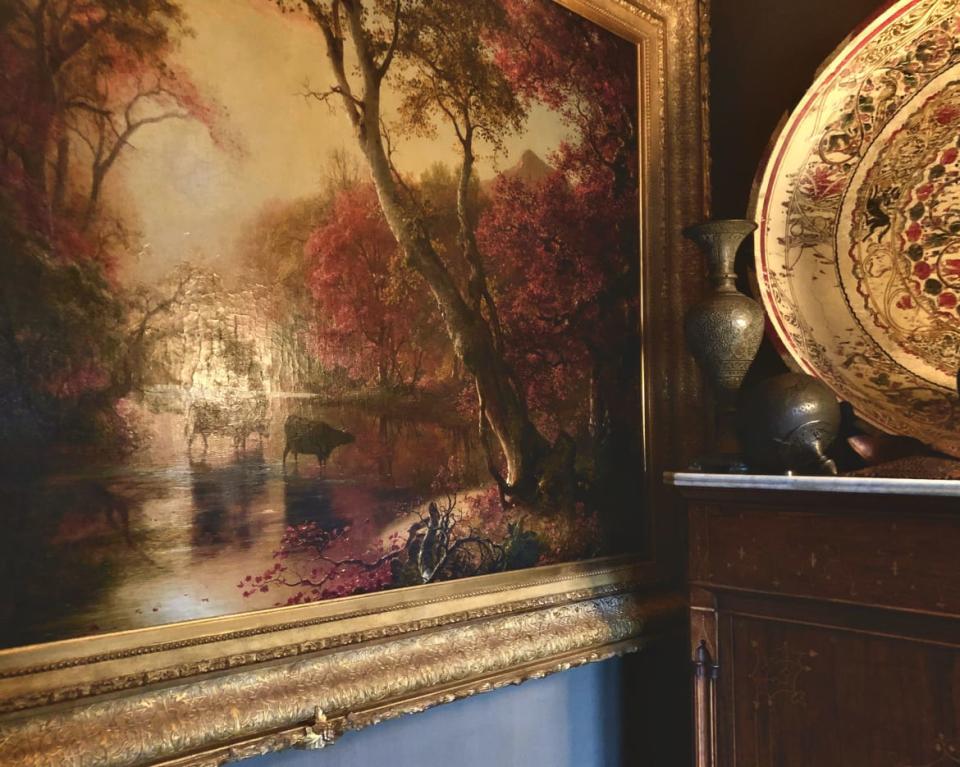
The Churches’ bucolic idyll was nearly destroyed when their two young children died of diphtheria in 1865. The grief-stricken parents then did what grief-stricken people of means did in those days: they hit the road, traveling first to Jamaica and then to Vermont for an extended stay. Upon returning home, they had another son, the first of the four Church children who would survive to adulthood. But they didn’t stay home for long. By 1867, they were off again, this time to Europe and the Middle East on what would prove to be Church’s longest trip abroad. The family would not return to America for 18 months.
Before embarking on that journey, Church had bought a piece of land on the hilltop overlooking his farmhouse, with the idea of building a much larger house. His journeying through Lebanon, Syria, and Egypt taught him what the house should look like. By the time the young family came home to the Hudson Valley, he was already fleshing out his ideas for the mansion, not least because he brought a lot of the Middle East back with him.
Like many 19th-century European and American travelers, Church never came home empty-handed. But in his case, the most precious cargo was a new way of thinking about art. Ironically, the man most closely associated with grandiose realism (his gigantic paintings of the Andes and Niagara Falls were the IMAX of their time) would become utterly beguiled by the non-figurative design of the Islamic world. The arched entryways, the stenciled walls and woodwork, the tiled floors, the carved stone mantelpieces, and even the mansion’s floorplan attest to this. And when Church had his road-to-Damascus moment, he was utterly unique: Touring Olana in the ’60s, the Islamic art historian Richard Ettinghausen declared, “This [was] the first instance of interest in collecting Islamic art in the United States.”
Make no mistake, Church acquired his share of Middle Eastern loot. He just wasn’t as blatant about it as most of the moneyed travelers of his time. When he ransacked the bazaar in Damascus, he did it with taste.
And he didn’t stop when he got home. In an amusing letter to a friend in 1878, he reports on a buying spree with his wife in New York City: “I took Mrs. C. to New York on Tuesday with Miss Roosevelt… I bought some Persian brass work—two rugs—a three-tined spear, Persian, an Arabian coffee pot, an Arabian Table, a piece of Persian Embroidery, a Persian Battle Ax, a silk Turban, a Moorish plate, et cetera…”
Church took inspiration from what he saw on his travels and what he brought home, and then he turned it inside out, creating his own Aladdin’s cave of a house that can be said to have been inspired by Moorish and Middle Eastern architecture but is in no way a true replica. It’s fun, in fact, watching art historians and architectural writers ransacking their arsenals of descriptive terms for this singular, beyond-category house. At least from their fumbling examples, I know better than to try.
All I can tell you is that you should see it for yourself, and you definitely should see it. But be prepared. Olana casts a spell all its own.
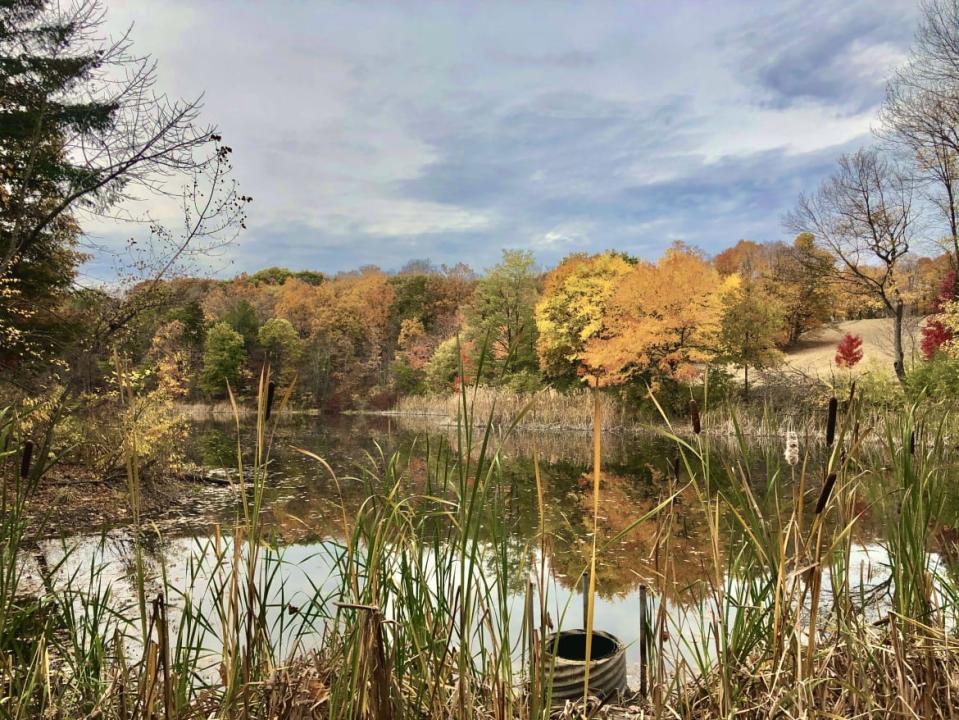
To do it right, you should start by hiking some of Church’s elaborate trails. He could be a little harebrained when it came to home design. Some of the existing architectural plans imply that at one point Vaux had to dissuade him from siting the kitchen and dining room on opposite sides of the house. But when it came to landscape design, he was unerring. So, take a hike. Then tour the house. Then walk some more, because you’ll need to decompress. And maybe reflect on the idea that this is precisely what Church intended. A terrain that pulls you out, a house that draws you in. Two parts of a whole.
Once inside, there is so much to see in every room and around every corner that a visitor finds it hard to settle. As soon as you cross the threshold, the energy of the place takes you over and propels you down the hall to a central room resembling a Moorish courtyard, then out to a broad, comfortable porch with a spellbinding view and woodwork that makes gingerbread look like the Bauhaus, then back inside, through sitting room, study, studio, and up the stairs. Even the bathroom is cool—porcelain fixtures framed by dark-brown paneling. Functional and austerely beautiful. Your one shot at seeing that in this house.
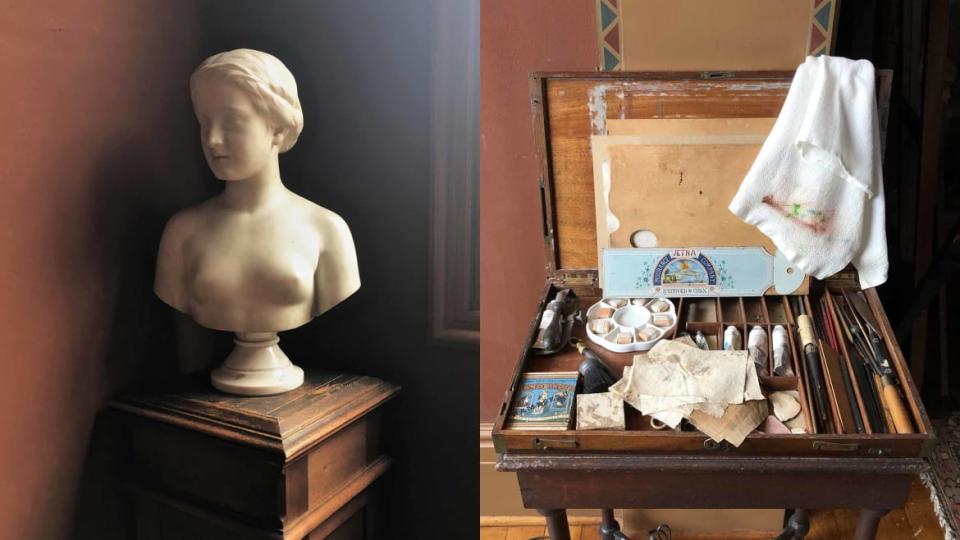
Taking stock of each room, you feel a little like a kid opening presents at Christmas. Calvin Trillin writes about food so good you have to stand while you eat it because all you want to do is jump up and down. Same with wandering through Olana, inside and out, because you grow more aware with each step that you’ve never experienced a place quite like this. The Churches may have relaxed at Olana, but it is impossible to believe that they ever took it for granted.
Today Olana is part of New York state’s park system. It was one of the first prizes claimed in the just-hatched preservation movement in the ’60s (apparently even Jackie Kennedy wrote a letter supporting its acquisition), and the state and the Olana Partnership have labored ever since to keep it in good shape. A few spaces (kitchen, kids’ bedrooms, the servants’ quarters) still need restoring, but most of the house and grounds are yours to wander. And all the furnishings are original, minus a couple of forgivable cheats: the paints in Church’s studio are newish, and when the stuffed peacock he installed finally disintegrated a while back, a new stuffed peacock was found to take its place.
House and grounds are open to the public year-round, but be advised that from November through May, tours are restricted to Friday-Sunday and from 10 a.m.-4 p.m. You would be wise to make reservations.
Get our top stories in your inbox every day. Sign up now!
Daily Beast Membership: Beast Inside goes deeper on the stories that matter to you. Learn more.

